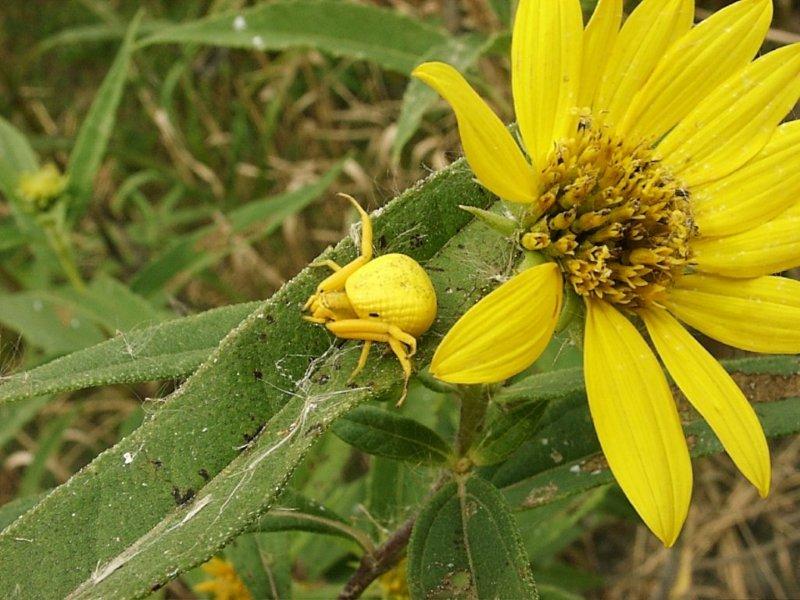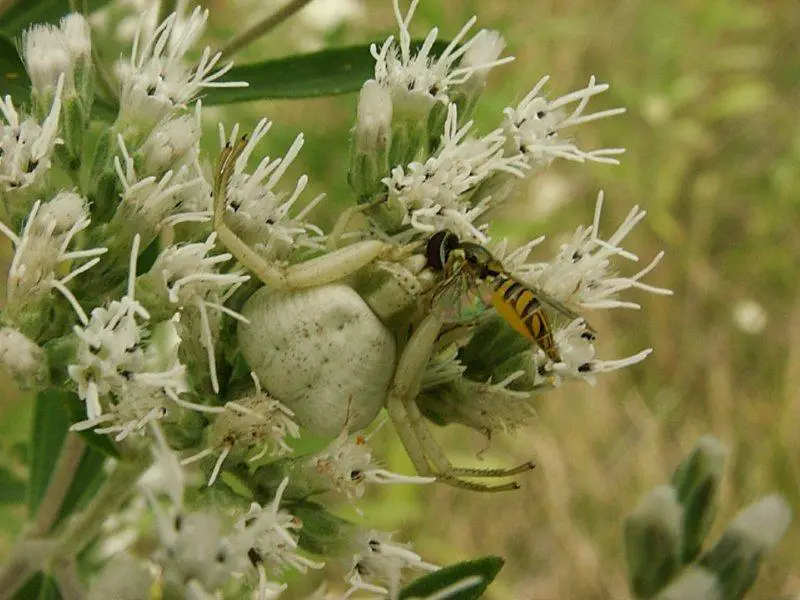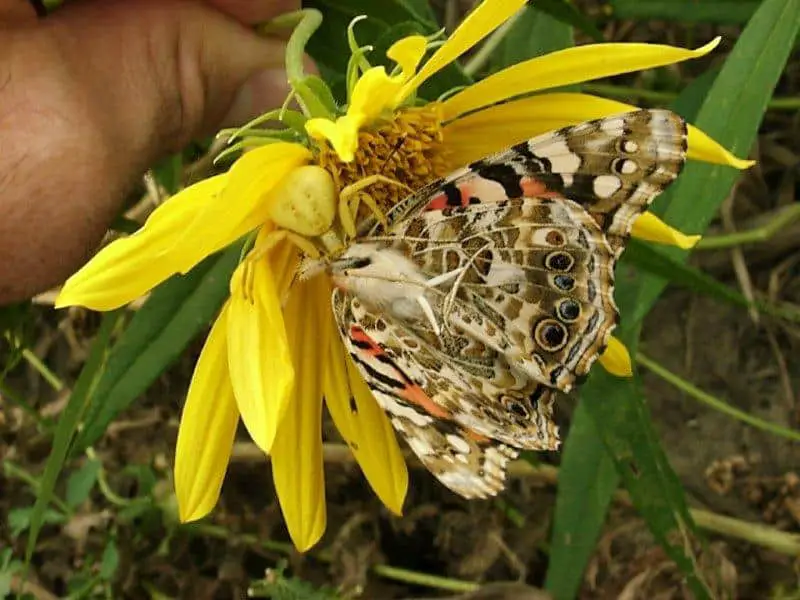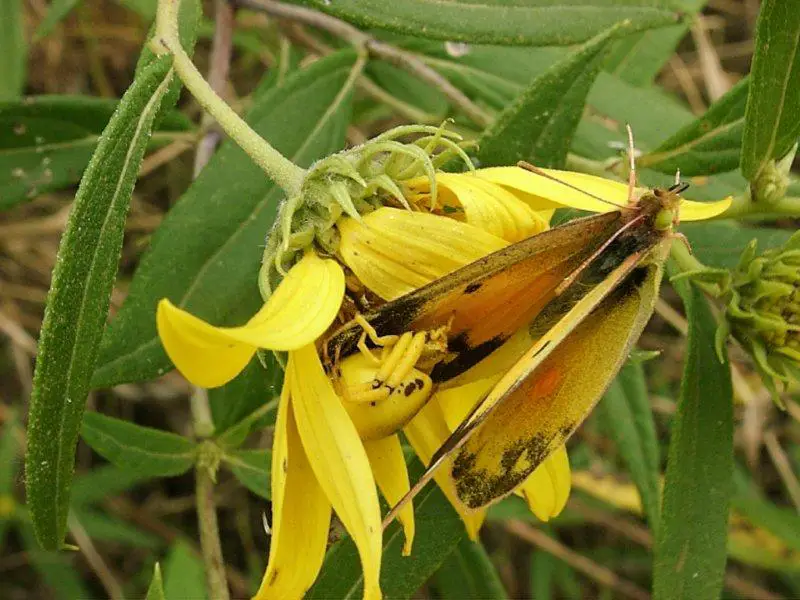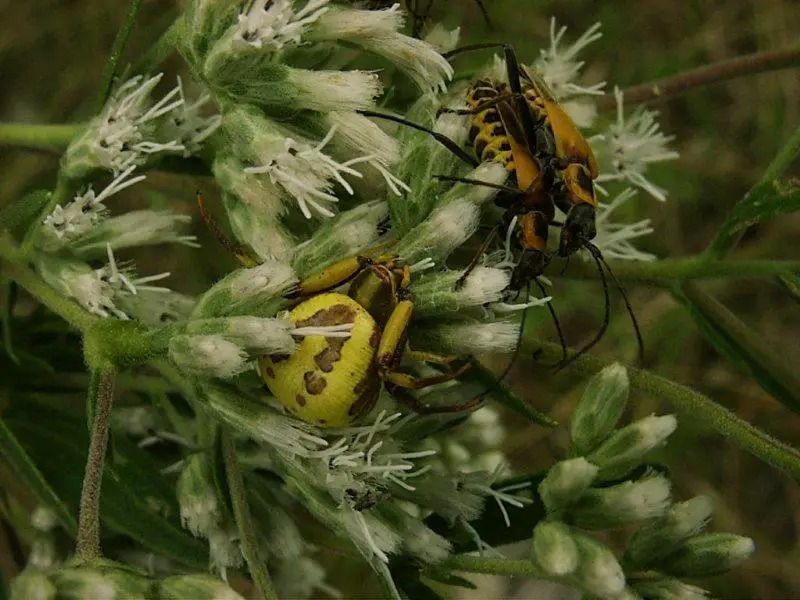Crab spiders (Flower spiders), Misumena vatia, can change their colors similar to the way that chameleons do. They often reside within flowers, waiting for nectar-seeking insects (such as bees and butterflies) to come looking for a meal. These spiders are usually white, yellow, or green… though I have seen reddish ones and dark (black/brown) colored ones. It takes them a few days to change their colors. Needless to say, probably more than one or two housewives have put an arrangement of flowers, from the garden, in a vase on the dining-room table… not realizing that they have brought in some invisible chameleonic spiders!
All photos are copyright to their owners and may not be reproduced without permission. The images are explained in the text below them in the order as they appear. You can click on the images to enlarge them.
1. The following is a yellow Crab spider (female) waiting for a victim near a yellow flower. She seems to be near to where a missing petal is… as if to take its place with her predatory body! (She needs to turn around… to be in the best position for an attack; but she is probably full (and not hungry).
2. In the following picture: Patiently waiting for a victim… Buddha-like! If butterflies and bees, in the area, are not alert… they are dead meat! Note the nice vertical brown stripes, on the side of the abdomen (which are difficult to see), which, in the position the spider is currently in, match the vertical-brownish flower parts.
3. The following is a Crab spider (female) who managed to get a nectar-seeking victim.
4. The following Crab spider’s potent and rapidly spreading venom has rendered its victim powerless regarding being able to fly away.
5. A female Crab spider in a white flower; note how the flower has green buds that the small, white blossoms emerge from… and how the white spider has a green tinge on the sides of the anterier part of its body… the cephalothorax!
6. The following female looks like she must have crawled from a yellow flower… and still must have been undergoing a change into the body color of white (to blend in with the white flower). But wait!… while taking the photographs, I did not notice any yellow/brown flowers in the vicinity. She was not transitioning! It was the mating season for those insects (that are in the photograph); she was making herself “look like them.” Note the heavy dark brown of her cephalothorax, and the heavy brown in her front legs (i.e., arms)… and on her rear! She was making herself look like them! Incredible!

